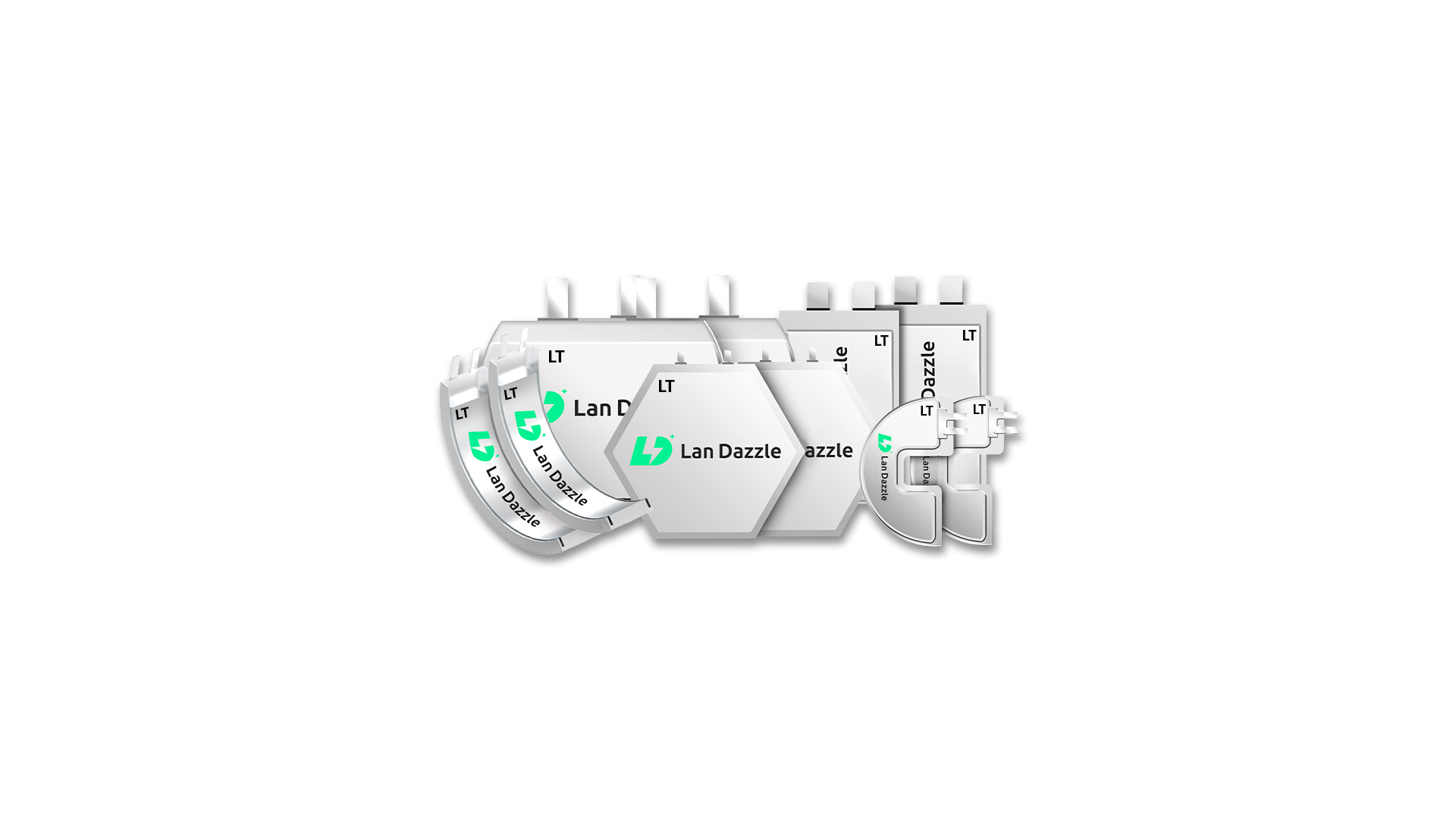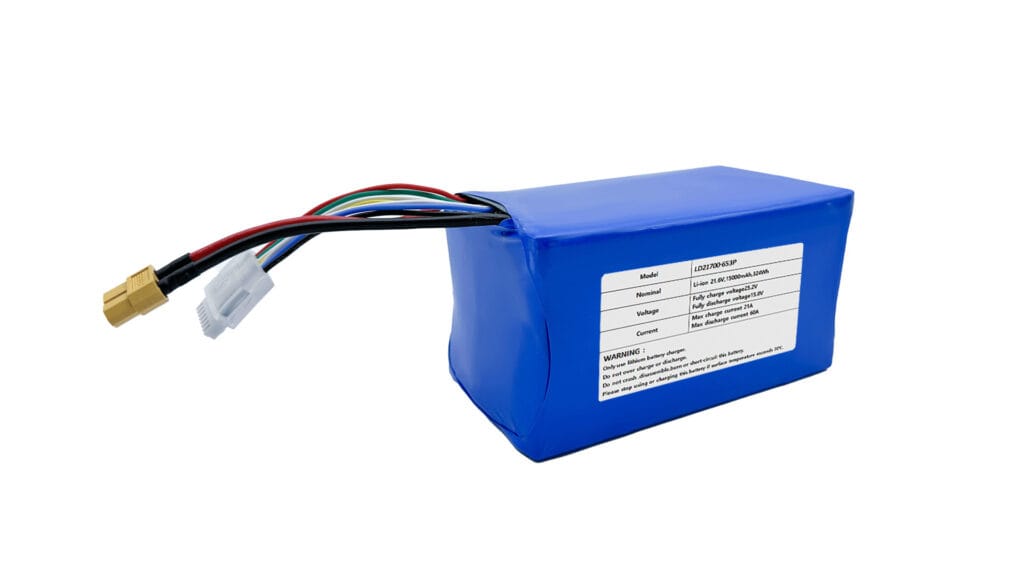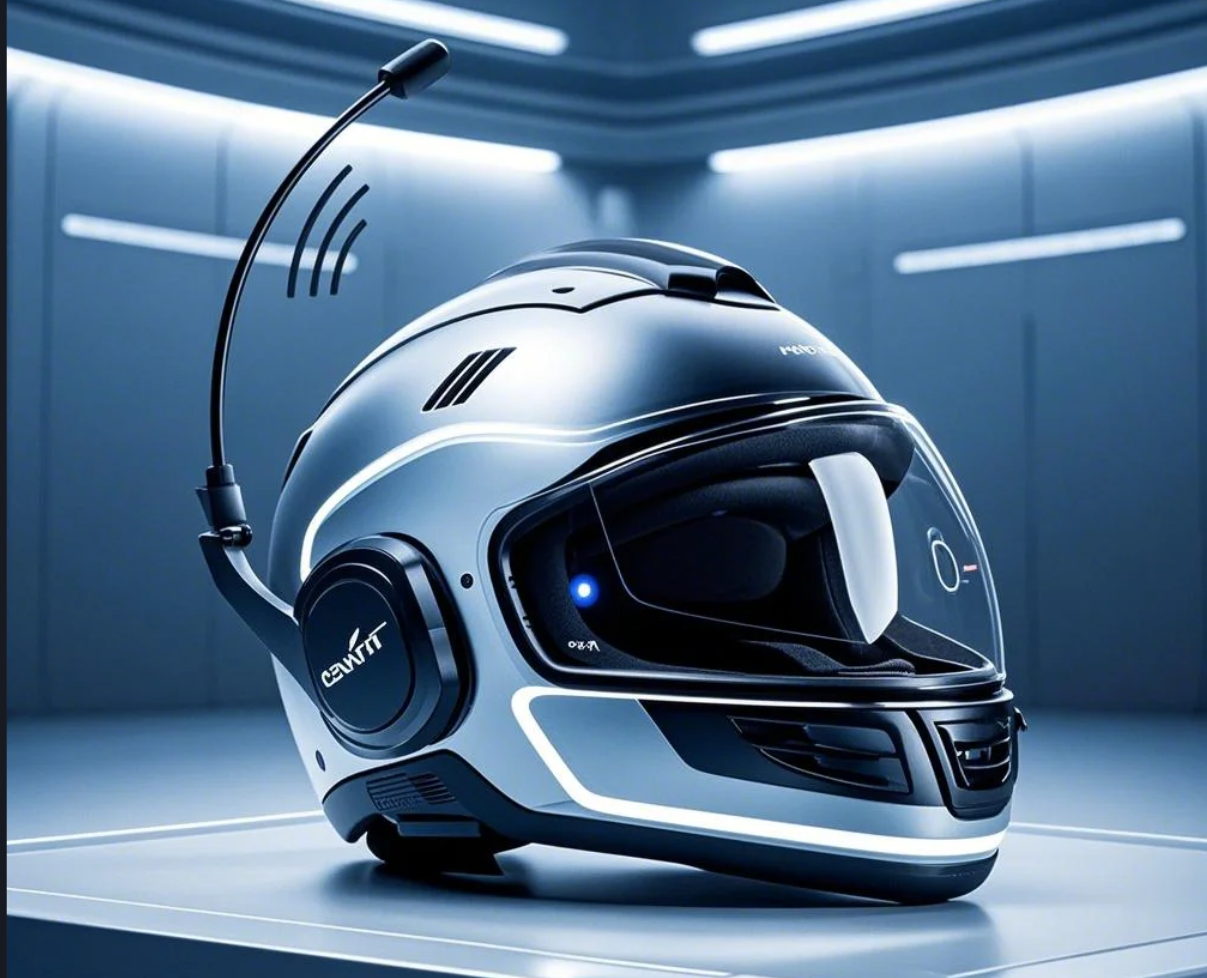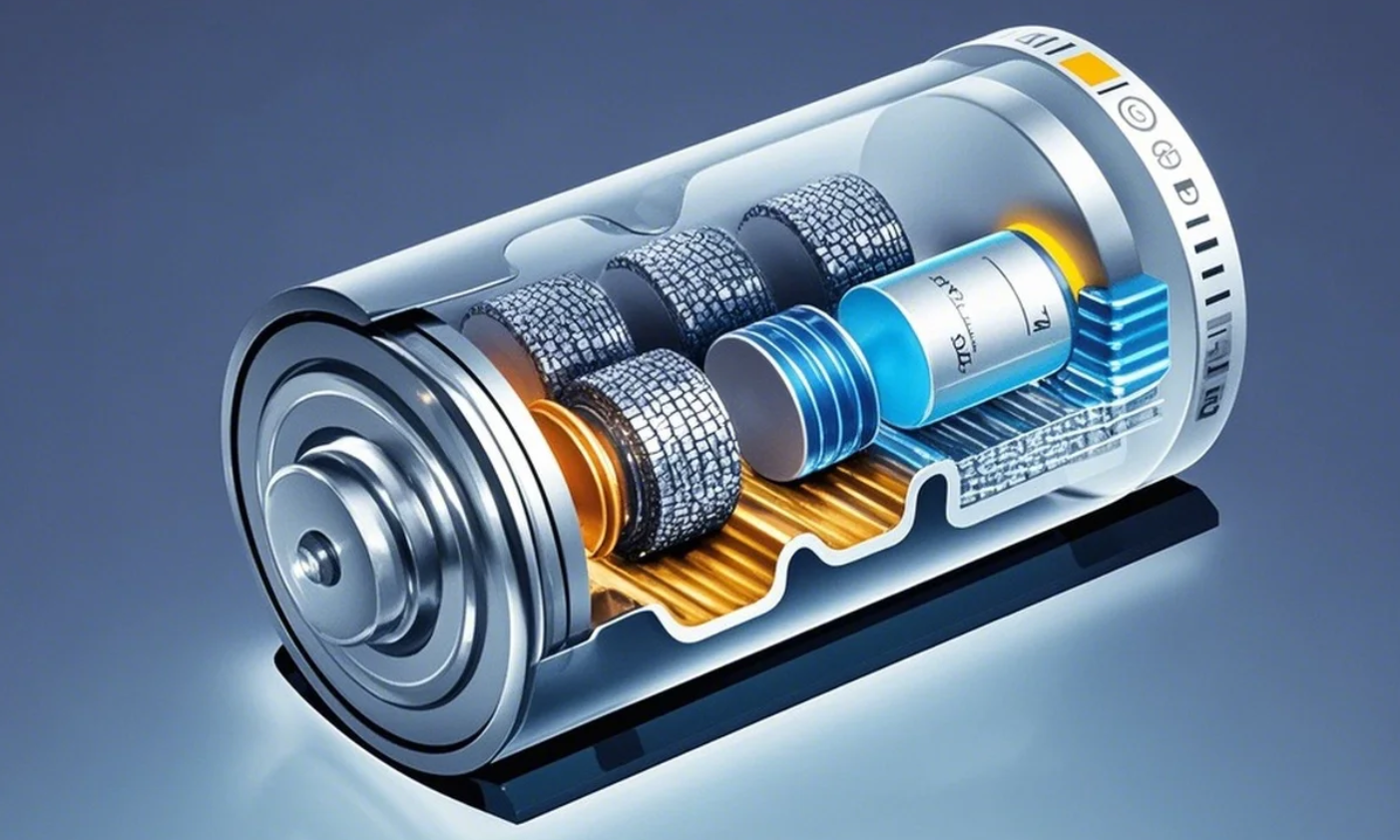Drones have transformed industries like logistics and agriculture with their incredible agility and aerial abilities. However, their powerful lithium-polymer (LiPo) and lithium-ion (Li-ion) batteries generate significant heat during use. As drones demand longer flight times, heavier loads, and faster charging, managing this heat becomes crucial. Ignoring it can reduce performance and even cause safety hazards. Understand effective heat dissipation techniques in drone battery is essential for safe, reliable, and long-lasting drone operation.
In this guide, we’ll explain why drone batteries overheat, how heat affects flight and safety, and explore the best cooling methods. From smart design and materials to advanced Battery Management Systems (BMS), you’ll learn how to keep your drone cool, improve battery life, and avoid failures.
Why Drone Batteries Overheat
At the heart of every drone is its battery, a powerhouse of chemical energy. But this energy conversion isn’t 100% efficient; a significant portion is lost as heat, especially under the strenuous conditions of drone flight. Understanding the sources and consequences of this heat is the first step toward effective mitigation.
Sources of Heat Generation in Drone Batteries
The main cause of battery heat is internal resistance, commonly known as Joule heating or I²R losses. When current flows through the battery’s components—such as electrodes, electrolyte, and terminals—resistance converts some of that energy into heat. This heating effect becomes especially pronounced during high-discharge activities like rapid takeoff, aggressive maneuvers, or carrying heavy payloads. Likewise, fast charging also generates significant heat.
In addition to electrical resistance, the electrochemical reactions within the battery are often exothermic, meaning they naturally release heat. On top of that, ambient temperature plays a critical role: in hot environments, the battery begins operation at a higher baseline temperature, reducing the thermal margin before it overheats.
Research shows that for every 10°C increase above the battery’s optimal temperature, its lifespan can be cut in half. This highlights the importance of effective and proactive thermal management.
Impact on Flight Time and Performance
An overheated battery is an underperforming battery. As temperatures rise, a LiPo or Li-ion cell’s internal resistance increases, causing greater voltage sag and reducing usable energy. It’s like drinking through a narrow straw — the energy is there, but it can’t flow efficiently. The result? Shorter flight times.
When overheated, a battery simply can’t deliver its full rated power or capacity. Modern Battery Management Systems (BMS) add another layer of protection: if temperatures climb too high, the BMS will throttle performance or trigger an emergency landing to avoid damage — potentially cutting your mission short. In extreme cases, poor thermal management can reduce effective flight time by 15–30% or more.
Safety Hazards: Thermal Runaway and Beyond
Beyond performance degradation, heat poses severe safety risks. The most feared outcome is 热失控, an uncontrolled, self-propagating chain reaction where excessive heat causes further exothermic reactions, leading to a rapid and dangerous temperature spike. This can result in cell swelling (gassing), rupture, fire, or even a violent explosion. Inadequate thermal management is a leading cause of drone battery failures and incidents, posing a risk not only to the expensive drone itself but also to surrounding property and even human safety. Preventing thermal runaway is not just about extending battery life; it’s about safeguarding lives and assets.
Passive Heat Dissipation Techniques in Drone Battery Design
Passive cooling methods are integral to initial battery design, relying on fundamental principles of heat transfer without requiring external power. They form the foundational layer of any effective thermal management strategy.
Material Selection and Battery Pack Design
Passive heat dissipation starts with smart material selection and thoughtful battery design. One of the most critical factors is cell-to-cell spacing — maintaining adequate gaps between cells allows natural airflow and helps prevent thermal propagation, where heat spreads rapidly from one cell to another.
To aid in heat dispersion, manufacturers often use thermally conductive materials for the battery casing, such as aluminum or carbon fiber composites. These materials act like heat sinks, drawing heat away from the cells and releasing it into the surrounding air.
Inside the pack, optimized current collectors and tab layouts can lower internal resistance and reduce heat generation at the source, promoting a more balanced temperature across all cells.
In larger drone battery packs, internal airflow channels 和 strategic air gaps are commonly incorporated to encourage natural convection, further supporting passive cooling without the need for active fans or external systems.
Heat Sinks and Thermal Interface Materials (TIMs)
Heat sinks are one of the most common ways to passively cool batteries. They help remove heat by increasing the surface area where heat can escape into the air — like giving the battery more “skin” to breathe through. These heat sinks are usually made of metals like aluminum or copper, which are really good at moving heat. To work better, they’re often designed with fins or ridges that let more air touch the surface.
But for a heat sink to work well, the heat has to travel efficiently from the battery to the heat sink. That’s where Thermal Interface Materials (TIMs) come in. When a battery and a heat sink touch, tiny air gaps can form — and air is a bad conductor of heat. TIMs are special materials (like thermal paste or soft pads) that fill in those gaps, helping heat flow smoothly.
While heat sinks and TIMs are commonly used for drone motors or electronics, they are just as important for keeping batteries cool and performing safely.
Phase Change Materials (PCMs)
Phase Change Materials (PCMs) offer a unique passive cooling solution, particularly effective for managing short bursts of high heat. PCMs work by absorbing a large amount of latent heat as they transition from a solid to a liquid phase (or vice versa) at a specific melting temperature. When a battery heats up, the PCM surrounding it melts, absorbing the excess thermal energy and maintaining the battery’s temperature relatively stable until all the PCM has melted.
The advantages of PCMs include their ability to provide stable temperature regulation without consuming power, making them ideal for situations where a battery experiences intermittent high-power demands. However, they do add weight to the battery pack and have a limited heat absorption capacity – once all the PCM has melted, its ability to absorb more heat diminishes until it re-solidifies. Despite these limitations, PCMs are an emerging solution for specialized or larger drone battery packs requiring precise temperature control during peak loads.
Active Heat Dissipation Techniques
When passive methods aren’t sufficient, active cooling steps in, utilizing external power to forcefully move heat away from the battery. These methods are crucial for high-performance drones and demanding operational environments.
Forced Air Cooling
Forced air cooling is one of the most common active thermal management strategies. It involves using fans or designing ducted airflow systems to actively circulate air over the battery cells or pack. The mechanism is simple: moving a greater volume of cooler air over hot surfaces increases the rate of convective heat transfer, drawing heat away from the battery.
The primary advantages of forced air cooling are its relative simplicity, lighter weight compared to liquid systems, and ease of integration into existing drone designs. Many commercial drones already incorporate fans for cooling electronics, which can be extended to assist battery cooling. However, its effectiveness is highly dependent on the ambient air temperature and the drone’s speed (which influences natural airflow). While effective, it does consume a small amount of power from the battery itself and can generate some noise. Well-designed forced-air systems can reduce battery temperature by 5-10°C compared to passive cooling, leading to improved discharge efficiency and sustained performance.
Liquid Cooling Systems
For high-power drones that generate a lot of heat, liquid cooling offers excellent temperature control. Instead of relying on air, these systems use a special liquid (like a water-glycol mix or a safe dielectric fluid) that flows through tubes or plates touching the battery. The liquid absorbs heat from the battery and carries it to a radiator, where a fan blows the heat away.
Liquid cooling works better than air because liquid holds and moves heat more efficiently. It helps keep all battery cells at a similar temperature, which is important for safety and long battery life. In fact, well-designed systems can keep the temperature difference between cells below 3°C and reduce overall heat by 20°C or more.
However, this cooling method is heavier, more complex, and there’s a risk of leaks. It uses pumps, tubes, and extra parts that add weight. Still, for industrial drones, heavy-lift drones或 agricultural drones that work hard for long hours, the benefits of liquid cooling often outweigh the drawbacks. Some even use liquid cooling during fast charging to keep batteries from overheating.
Heat Pipes and Vapor Chambers
Heat pipes and vapor chambers are smart, lightweight tools used to move heat away from batteries quickly and efficiently. They work by using a special liquid inside a sealed tube or plate. When one side gets hot, the liquid turns into vapor, travels to the cooler side, and turns back into liquid — releasing the heat in the process. The liquid then flows back to the hot side on its own, so the cycle can repeat. This process is called a phase change, and it moves heat much faster than solid materials alone.
-
Heat pipes transfer heat in one direction, like a narrow pipe.
-
Vapor chambers spread heat across a flat surface, making them great for cooling entire battery modules.
These systems don’t use any pumps or fans, so they’re completely passive — no moving parts, no extra power needed. They are also 轻量级 and can handle a lot of heat with minimal temperature difference.
Originally used in high-end computers, they’re now being adapted for dense drone battery packs, helping move heat from inside the battery to the outside casing or heat sink. This allows drone makers to design more compact, powerful, and reliable batteries.
Advanced Strategies and Future Trends
The pursuit of optimal thermal management is an ongoing journey, with researchers and engineers continuously developing more sophisticated and integrated solutions.
Battery Management System (BMS) Integration
The Battery Management System (BMS) is like the “brain” of a battery pack — and it plays a crucial role in managing heat. Modern BMS units have multiple temperature sensors placed throughout the battery to monitor each cell’s temperature in real time.
When the system detects overheating, the BMS can take action to protect the battery:
-
It might reduce the power output to lower the temperature.
-
It can turn on cooling fans or pumps (if available).
-
In serious cases, it may shut down the battery to prevent damage or dangerous overheating (known as 热失控).
What’s more exciting is the next generation of “smart” BMS systems. These use AI and Machine Learning to predict when the battery might overheat — based on usage patterns, outside temperatures, and past performance. By acting ahead of time, they help keep the battery cooler, safer, and more efficient.
This kind of intelligent thermal control helps drones fly longer and avoid unexpected power drops due to overheating.
Aerodynamic and Structural Integration
Effective heat dissipation goes beyond simply adding cooling components — it requires intelligent, integrated design. Modern drone manufacturers are increasingly embedding thermal management into the drone’s aerodynamics and structure. By designing the chassis and battery compartments to promote natural airflow during flight, vents and air channels guide cooling air efficiently around hot components.
For example, sport and racing drones use highly ventilated frames that harness high-speed airflow to keep batteries cool. Additionally, the drone’s frame itself can act as a heat sink by using thermally conductive materials to draw heat away from the battery.
This integrated approach creates lighter, more efficient cooling solutions by making thermal pathways part of the drone’s core architecture.
Emerging Technologies
The future of drone battery thermal management is brimming with exciting possibilities:
- Immersion Cooling with Dielectric Fluids: This highly effective method involves submerging battery cells directly into a non-conductive (dielectric) liquid coolant. This offers unparalleled heat transfer efficiency and temperature uniformity, though it’s currently more complex and heavier for typical drone applications.
- 固态电池: As solid-state battery technology matures, their inherently better thermal stability due to the absence of flammable liquid electrolytes could significantly reduce thermal management challenges and the risk of thermal runaway.
- Graphene-Enhanced Thermal Materials: Graphene, with its exceptional thermal conductivity, is being explored for use in heat sinks, thermal interface materials, and even battery electrodes to improve internal heat dissipation.
- Thermoelectric Coolers (Peltier Effect): These solid-state devices can actively pump heat from one side to another when an electric current is applied. While currently inefficient for large-scale cooling, their compactness and ability for precise, localized temperature control make them appealing for targeted battery cooling in specialized drones.
Best Practices for Drone Operators
While advanced engineering solutions are paramount, drone operators also play a crucial role in maintaining battery health and safety through good practices:
- Allow Batteries to Cool: Always let batteries cool down to near ambient temperature between flights. Recharging or flying with a hot battery significantly accelerates degradation.
- Avoid Overcharging/Over-Discharging: Use smart chargers that automatically cut off when full, and avoid flying until the battery is critically low. This reduces stress and heat.
- 正确存放电池: Store batteries at their recommended storage voltage (typically around 3.8V per cell for LiPo) and in a cool, dry place, away from direct sunlight.
- 监控器温度: If your drone’s telemetry system provides battery temperature data, monitor it during flights, especially during demanding maneuvers.
- Match Battery to Conditions: In hot environments, use batteries with better inherent cooling designs or lower discharge rates if possible. In cold conditions, pre-warming batteries to optimal temperatures can improve performance and safety.
- 定期检查: Periodically inspect your batteries for any signs of swelling, punctures, or damage. Any physical deformation is a strong indicator of thermal stress or internal issues.
结论
The evolution of drone technology is inextricably linked to advancements in battery design and, crucially, effective heat dissipation techniques. The silent battle against heat generation is waged on multiple fronts, from the fundamental choices of materials and cell arrangements in passive cooling to the dynamic intervention of forced air, liquid systems, and advanced heat pipes in active cooling. The intelligence of the 电池管理系统 (BMS), working in concert with the drone’s aerodynamic design, ensures that batteries operate within safe and efficient parameters.
Mastering thermal management is not merely an engineering feat; it’s a strategic imperative. It directly translates into longer, more reliable flight times, extended battery lifespans, and, most importantly, enhanced operational safety, mitigating the risks of thermal runaway. As drones continue to push the boundaries of what’s possible, from urban air mobility to autonomous delivery, continuous innovation in battery chemistry and thermal management will be the key to unlocking their full potential. The future of flight truly depends on how well we control the heat.
Ready to take your drone’s performance and safety to the next level?
At LanDazzle, we specialize in custom-designed lithium battery solutions with advanced thermal management tailored for drones. Contact us today at info@landazzle.com to discuss how we can help optimize your drone’s power system for longer flight times, enhanced safety, and reliable operation.





